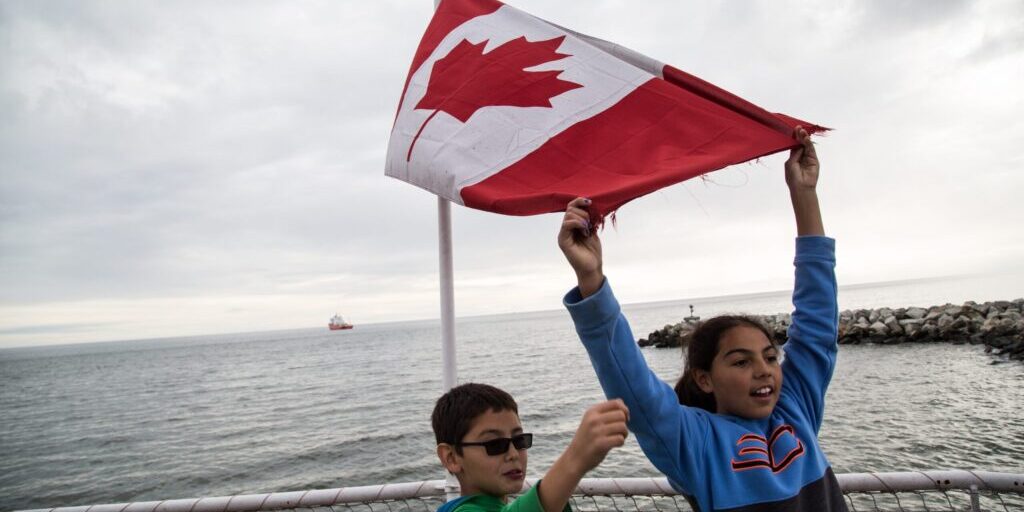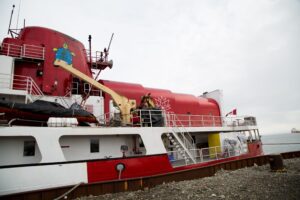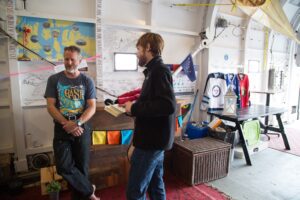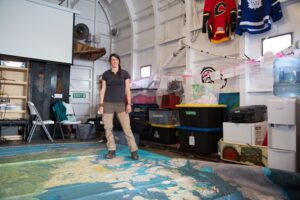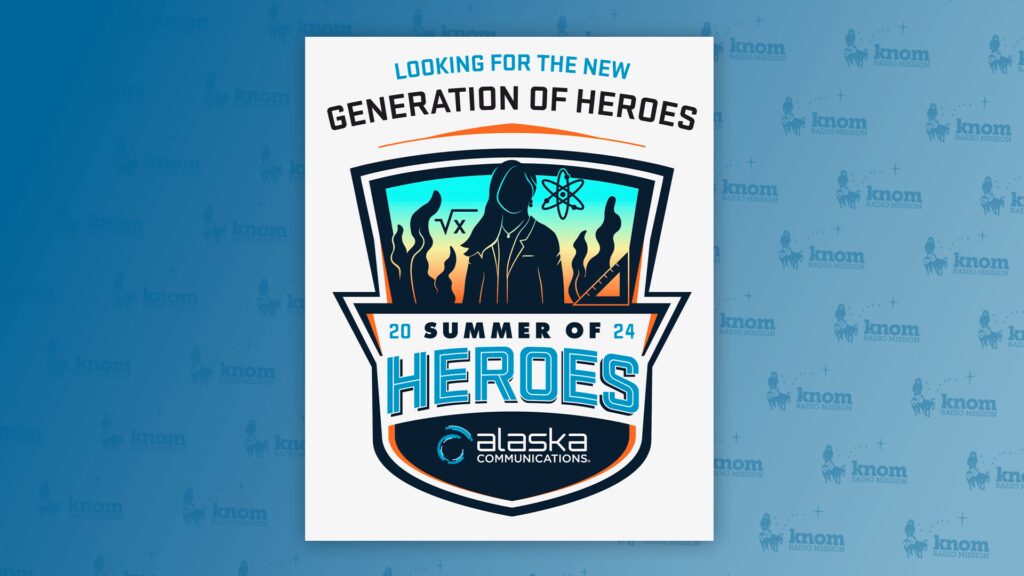A Canadian expedition celebrating the 150th anniversary of the country’s nationhood stopped in Nome last weekend. Canada C3, as it’s called, is traveling by ship around the northern coast from Toronto to Victoria, British Columbia.
A group of kids from Nome is running around a giant floor map of the Canadian Arctic, on board the converted icebreaker Polar Prince.
We’re standing beneath the curved steel beams of what used to be the helicopter hangar. It’s now become the common room for this traveling expedition, the walls filled with mural artworks from different legs of the voyage. Wooden canoes hang from the ceiling, gifts from native tribes across the north coast of Canada. There’s even an Alaska flag.
Scott McDougall joins us in the hangar. He’s the leader of C3, and he says the expedition is focused on four themes: reconciliation, diversity, youth engagement, and environment:
“This is like celebrating your birthday by airing some of your dirtiest laundry. These are very much unresolved issues for Canadians. But in that light, our goal is, along this whole journey that you see here, to visit communities and to create conversations, on behalf of all Canadians, about these very, sometimes perplexing questions.”
Those conversations are led by a rotating group of Canadians, different on each of the 150-day journey’s 15 legs: musicians, scientists, writers, artists. McDougall says it’s a very emotional experience for these participants.
“We get a lot of tears shed on this boat, and a lot of difficult conversations, and a lot of laughter. And sometimes, conversations that feel like we’re approaching solutions around these questions, and sometimes conversations that leave us muddled and with as many fresh questions as we had in the first place.”
And often, he says, native communities are justifiably wary of the project:
“Everything that first arrived, from a colonial perspective, came aboard a ship, so the notion that we would try to arrive on a ship in a more benevolent way is a kind of perplexing idea, and so they usually come aboard with some skepticism, and happily, are usually converted at least to believe the honesty of what we’re trying to do.”
In Point Hope, the ship’s previous stop, McDougall said they were welcomed warmly:
“There was drum dancing, and singing, and they gave us a feast. And as we arrived on the beach they greeted us with this ululation, which is evidently historically the way they would greet whalers returning home from sea.”
In Nome a few days later, participants visited the Katirvik Cultural Center and the Carrie M. McLain Museum and held a workshop with local students. Christopher Steppe, director of the Nome Boys and Girls Club, helped to organize the workshop. He says it was a cross-cultural learning experience:
“The kids were really excited to learn about and hear the super-close similarities in terms of what they do for subsistence, and even language: what terms we use to call ground squirrels are shik-shiks, and they have a similar name that was sik-sik. It was really fascinating for them to be able to hear that. And then they got to tour the boat afterwards, too.”
That’s where I met them, onboard the boat, climbing ladders, meeting the pilot on the bridge, and seeing the Legacy Room, where a trove of gifts from tribes and people across Canada is housed.
And after this week, there are items from Alaska, too.
Image at top: Kids from Nome tour the Canada C3 icebreaker “Polar Prince.” Photo courtesy of Lia Nydes.




